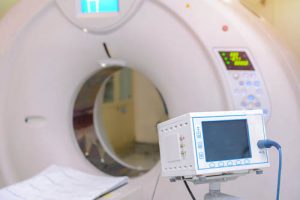According to research presented at the British Cardiovascular Conference in Manchester, England, the amount a heart ‘bleeds’ following a heart attack can predict the severity of future heart failure.
Over 40 percent of people who suffer from a heart attack will be affected by bleeding, or bruising in the heart. Researchers have now found that heart attack victims are at a higher risk of developing heart failure in the months following the initial heart attack.
In the United Kingdom each year, there are 188,000 hospital episodes attributed to heart attack. That is about one every three minutes.
There are 188,000 hospital episodes attributed to heart attack in the United Kingdom each year — around one every three minutes. But although around 7 out of 10 people now survive a heart attack, many are left with heart failure.
The study, funded by the British Heart Foundation, found that bleeding was linked to a 2.6 times greater risk of adverse remodeling, where the heart muscle changes shape. This remodeling is a precursor to heart failure.
The British Heart Foundation-funded study found that bleeding was linked to a 2.6 times greater risk of adverse remodeling, where the heart muscle changes shape, which is a precursor to heart failure. It is also linked to a six times greater risk of either death or heart failure following a heart attack.
The researchers also validated a test for use at the time of heart attack treatment to rule-in or rule-out heart muscle bleeding, and the likelihood of survival free of heart failure. This information would be useful to doctors to identify patients who are at risk of adverse outcome for more intensive treatment. The findings will pave the way to find new treatments to prevent bleeding following a heart attack and the subsequent onset of heart failure.
With the validation of the testing, and the use of MRI, a scan can be used after a heart attack to monitor heart muscle bleeds. Heart Muscle bleeds happens in phases, with the first phase is in the 12 hours following a heart attack, and the second, taking place within two or three days. By scanning for heart bleeds, there is then a window of opportunity to introduce treatments to prevent the second phase, which has the potential to reduce or prevent the later onset of heart failure. Having an MRI machine with the most accurate and precise lens designed and manufactured by UKA will also give the clearest picture possible to show even the slightest anomalies.
Quoting Prof. Colin Berry from the University of Glasgow, who led the study, “This research has provided us with a new understanding of heart muscle injury and how it develops. We can now focus our research on developing new treatments to reduce the level of this injury following a heart attack.
“The study has also presented a new way of identifying those at a higher risk of heart failure before the condition develops. This knowledge can be used to identify those most in need of interventions and monitoring earlier.”
Universe Kogaku designs and manufactures optical lenses for MRI Machines, security, high tech and electronic applications. We stock 1000’s of standard lens assemblies and can custom design a solution for scanners, CCTV, CCD/CMOS, medical imaging, surveillance systems, machine vision and night vision systems.